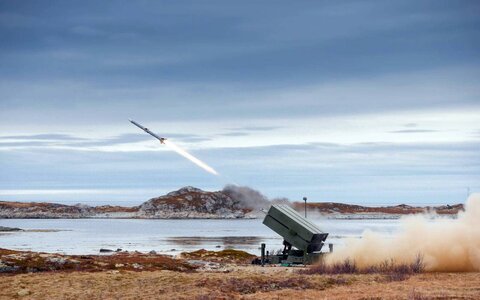Eric Gomez and Benjamin Giltner
This is the third of a three‐part series examining US arms sales to Taiwan. The first article outlined our methodology for determining the weapons systems within the backlog and showed how traditional capabilities made up a majority of the backlog based on dollar value. The second article examined US maintenance sales to Taiwan and showed how traditional capabilities are more expensive to sustain than asymmetric capabilities.
In this article, we compare arms and maintenance sales made under the Trump and Biden administrations to show how US military support for Taiwan has changed over time.
The data used in this article came from the Defense Security Cooperation Agency’s (DSCA) notices of major arms sales. Because this article compares all sales from the Trump and Biden administrations, it does not distinguish between arms sales that have been delivered to Taiwan and those that are backlogged. For that reason, there is a small difference between the dollar amounts mentioned in the figures below and the dollar amounts for the arms sales backlog. The data were last updated on November 1, 2023.
As shown in Figure 1, the Trump administration announced more sales of weapons and maintenance to Taiwan across all four categories.
The two administrations came closest to one another on sales of maintenance items, with Trump announcing $1.9 billion and Biden announcing $1.6 billion. The Trump administration heavily favored sales of traditional weapons, selling a total of $10.4 billion in traditional capabilities. This was $6.5 billion more than the asymmetric capabilities the administration sold. The gulf between the two administrations in terms of overall arms and maintenance sales is also significant. Trump announced a total of $18.3 billion to Biden’s $4.4 billion.
Figure 1 also clearly shows that the Trump administration is primarily responsible for the current arms sale backlog to Taiwan. Based on data from the Stockholm International Peace Research Institute, nearly every US arms sale announced before the Trump administration took office is now in Taiwan’s hands. The Trump administration essentially ran up a huge arms sale tab with Taiwan. However, due to weapon production timelines, the responsibility of delivering the arms and clearing the tab falls on the Biden administration.
Figure 2 compares the arms and maintenance sales of the two administrations by both the number of sales and dollar value.
While the Biden administration has lagged behind the Trump administration in almost every respect, it has doubled the number of maintenance sales despite a slightly lower dollar value of maintenance sales. This suggests a shift in priorities for arms sales to Taiwan under Biden. Now, the focus is on sustaining what Taiwan already has instead of announcing big‐ticket items that would further inflate the backlog. Biden still has time in his current term to announce more arms sales. If current trends hold, these future sales will likely come with a relatively small price tag and be focused on either maintenance or munitions.
Many of the most expensive platforms that Trump announced will begin arriving in Taiwan in the next two or three years. This will give the next administration an opportunity to set the tone for future sales as the backlog begins to diminish. Regardless of who wins the 2024 election, it will be essential for the United States to expand Taiwan’s stock of asymmetric capabilities to deter a Chinese invasion.




